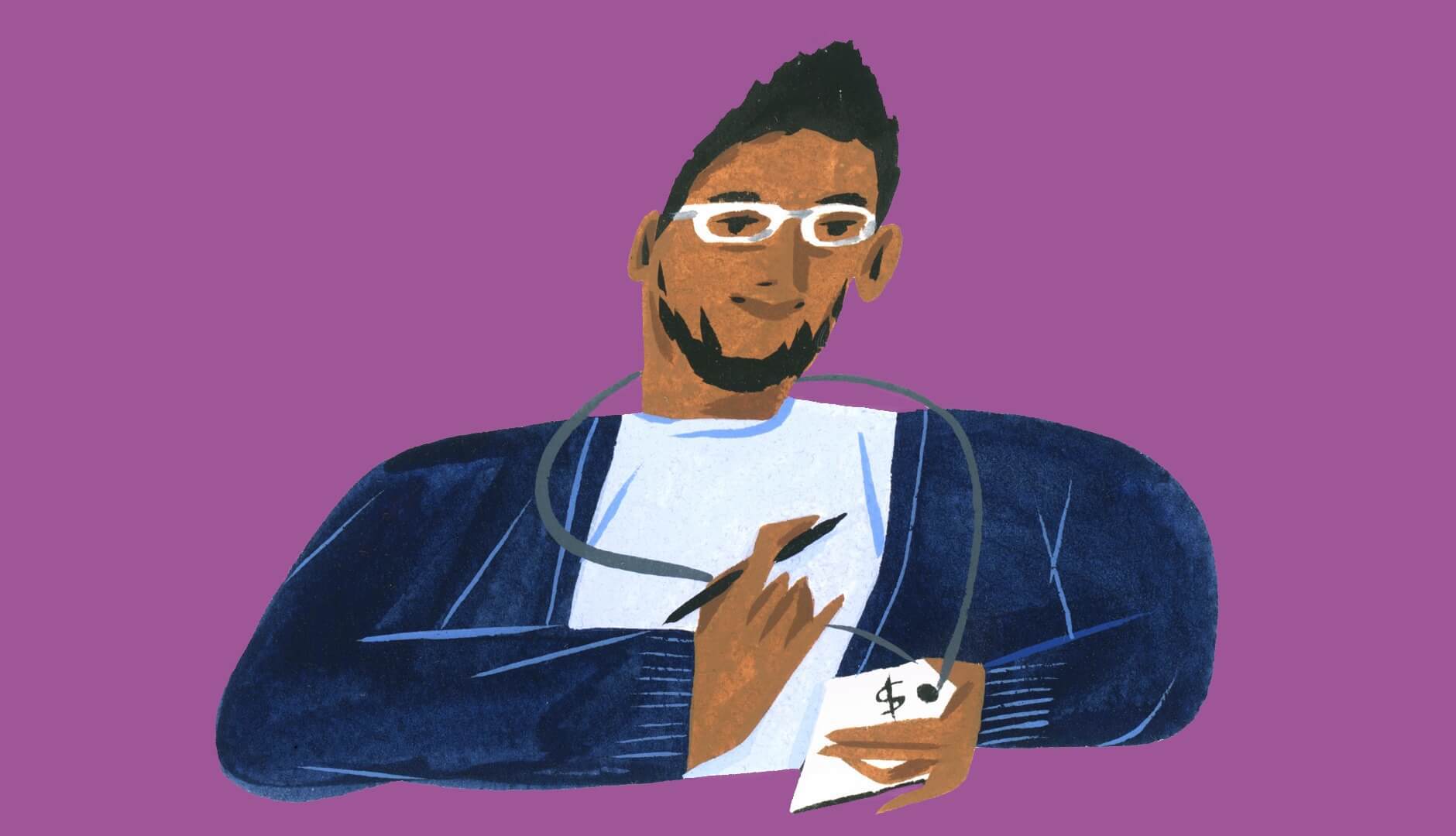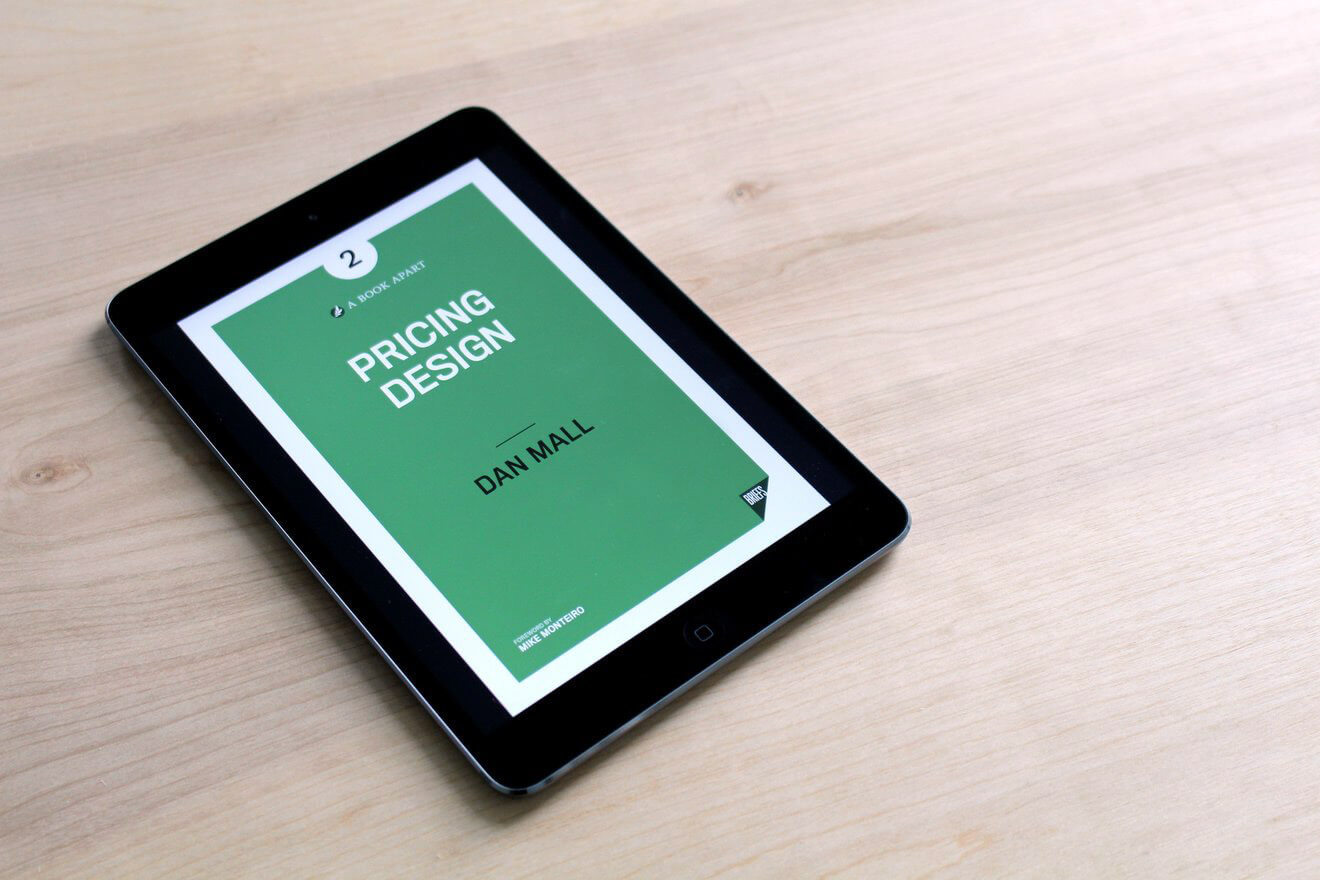Talking Shop with
Dan Mall
Founder, creative director, and advisor in Philadelphia, Pennsylvania
-
Interview by Carly Ayres
@carlyayres
-
Illustration by Ping Zhu
@pingszoo
Talking Shop is an interview series where we talk to freelancers about freelancing. In this interview, we talk to Dan Mall, a creative director and advisor in Philadelphia, Pennsylvania.
Who are you and what do you do?
Dan Mall: I am a husband and a dad. I have two daughters. Work-wise, I am a designer. I run a design company called Super Friendly. I wrote a book about pricing. I started a product called Super Booked. And I play basketball once a week on Friday nights.
Today, we’re talking about pricing—a topic you’re exceedingly familiar in. What’s the most common question you get asked?
It depends on the level that the person is at. Students or people that haven't priced a lot, the first question is always, “Where do I start?” Then, as people get more into the habit of doing it and they start discovering things, the next most common question is, “How do I do it?”
Let’s tackle that first one. Where do you start?
One of the biggest pieces of advice that I give is just charge something. Pick a number. The first time, it's going to be tough. You're going to overcharge and they're going to say no, or you're going to undercharge and you're going to realize it immediately—but then you have a point of reference.
The second is working backwards. Add up all your expenses and the number of hours you want to work in a month. That might be 160 hours, it might be 40 hours. Figure out what you need to live. If you need $13 an hour to live, double that. Charge $26 an hour and see. Anything above your baseline rate and you’re profitable.
Pricing feels personal. I think it’s incredibly difficult to put dollar amount next to your time and not associate it with how you value yourself as an individual.
It's no coincidence that when people are first starting out, they're charging less than people that have been doing it for a long time. It's not because the people who have been doing it a long time figured it out—it's because they feel more valuable. They have more experience. People's time becomes more valuable as they get more experience, so they can charge higher for it.
You’re not a believer in hourly rates. Why is that?
At some point, you outgrow them. Prices are abstract. When people see a dollar amount, they immediately begin relating them to something that they know. If your hourly rate is $80, your client might think, ‘Oh, that’s what I paid my plumber to unclog my toilet.’ Once it becomes $350, however, they think, ‘That’s what I pay my doctor. I don’t think I should pay my web designer the same as my doctor.’ So, even though a lot of designers can (and do) make $350 an hour, it's hard to charge a client that.
So, if you're going to do a time-based rate—which I still think is flawed—take a larger unit of time. Pick a monthly rate because it's a lot easier to understand. If you're working with a big organization, you might be a monthly line-item to them, essentially. And eventually you outgrow that, too.
And how did you come up with the concept of object value pricing?
I remember one time when I was still freelancing, a client wanted to book me 6 months out. I didn’t want to be booked that far out, in case they bailed or plans shifted, so, I told them that booking me 6 months out would be a $10,000 non-refundable extra fee. Two days later, I get a check in the mail for $10,000. And that turned on a light for me.
“People will pay for things that are important to them. It doesn't matter how ridiculous you might think it is. If it’s important to them, they’ll find a way to pay for it.”
So, in my own practice, it made me look for things that are important to my clients and price based on that. What are the things that they would pay a high amount for? And then you pitch that.
You also recommend that designers trust their gut. You say that logic works to their detriment, but that feels so counter intuitive!
Most things in life are. When you're a kid, you do just about everything by instinct because your logic centers aren't developed. Kids make good decisions. I have two kids and I ask them a lot what they would do. If one comes to me with a problem, I’ll ask them what the they want to do about it and, more often than not, they come up with an amazing solution.
You have your own gut instinct about what's valuable, what not to do, what is safe, what is dangerous—those are the things that you use when you price. We talk about red flags with clients, like the client that doesn't get back to you for ten days. When I was a kid, I knew that, too. I didn't need to read a book to figure that out.
It's like learning to draw. Every kid knows how to draw. And then we unlearn it when somebody tells us we’re no good or that it looks bad. Then we stop doing it. That doesn't mean that we don't know how to draw. Of course you know how to draw. The same thing is true with pricing. Of course you know how to price. You just need to practice it to build the muscle back up.
It seems like when you have the ability to walk away from a project is when you can really start pricing what you think you're worth.
You have ultimate leverage when you can walk away. When I first started, I took everything. The crappiest design work. I got some good stuff. I got some bad stuff. I got some stuff I will never show anyone. I will never talk about it. But it was to build that cushion, so that I could turn projects down.
“The more you can increase your ability to walk away, the more leverage you have. Work until you have that.”
If I need it, I have to take it. The faster you can get yourself out of that place, the better. If that means I have to take a bank loan one month, fine. If it means I need to dip into savings, my 401K, okay. Those things have penalties of course, but that's better than working with the wrong client for a long time with little pay.
How soon into a project do you typically bring up the topic of budget?
It's usually step two for me. Step one is: What do you want? What is important to you? And once I’ve got that, step two is: How much do you want to pay for it? That's it. You don't need to tip-toe around it because it's part of the transaction.
You want a site that helps you get more respect in your industry? Fantastic. How much is that worth to you? What happens if we don't do that? What do you lose? If the money they’re willing to spend on the thing doesn’t add up to what value they think it has, then you have a problem.
Sometimes the budget just doesn’t exist. The project might be incredibly valuable to the client, but what if they simply don’t have the funds to match?
There are two parts to that. First, I believe that there is always money for things that are important. I’ve had clients where they came to me with $3,000 for a website and after we talked, I told them it would be $80,000—a price way out of their ballpark. But, they went back, talked to their CFO, talked to the marketing team, then two years later came back to me with $60,000. Even though the budget wasn't where I wanted it to be, they really wanted to work with me. They waited two years.
Then part two is that some clients subsidize others. The problem with hourly pricing and timed-based pricing is that they only get you to exactly to where you need to be, but no more than that. If you’re making 100% margin on one client, then you can afford to get paid less for another. If there’s a client you really want to work with, you can make it happen.
How has your relationship to money changed since when you first began your career to now?
It’s changed drastically. I now work with clients with million dollar budgets. Money is an abstraction.
“No one cares about the pieces of paper or the check. They care about what that thing can do for them.”
It’s helped me think about what my purpose is in life and how money can help me achieve that. My personal mission is to help connect people to opportunities. So, how does money help me to do that? I think that's the thing that has been really transformative for me over the past couple of years is thinking about what money enables me to do.
99U Conference - Replacing Internship with Apprenticeship
That's what value pricing did for me. It was a catalyst for me in thinking about how I frame projects, but also how I frame my own outcomes. What do I want? What are my end goals? Then I capture some of that value back in the form of money and can make those goals happen. I can hire people and give them a living. More money means I can devote more of my time to other things. I can run my apprenticeship program. I can spend more time with my family. Last year, I took a month off for the first time ever and took my family on a trip around the world. We went to South Africa, Portugal, Italy, and the U.K. I didn't have to work, I didn't have to sneak away to check email. It let me really focus on my family.
So, my relationship to money has really been about helping me to focus on what outcomes I want out of my business, out of my life. Understanding what it can do for me, and then making that happen.
You can visit Dan Mall’s website at danmall.me.

